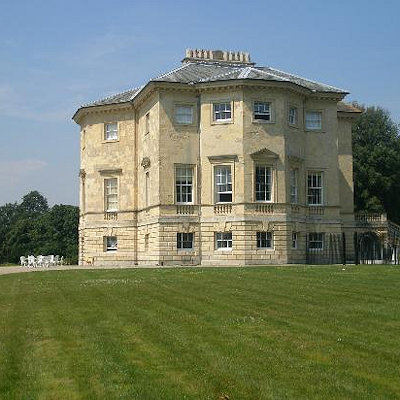
Like us on Facebook
PLACE NAMES


 
|
|
Bexley & Bexleyheath
|

|
|
|
Bexley was an ancient parish of Kent, in the Diocese of Rochester, and under the Local Government Act 1894 formed part of Bexley Urban District. The urban district gained further status in 1935 as a municipal borough. Kent County Council formed the second tier of local government during that time. In 1965, London County Council was abolished and replaced by Greater London Council, with an expanded administrative area that took in the metropolitan parts of the Home Counties. Bexley Municipal Borough, Erith Municipal Borough, Crayford Urban District Council and Chislehurst & Sidcup Urban District Council were merged (less areas of Chislehurst and Sidcup that became part of the new London Borough of Bromley) into a new London Borough of Bexley.
The main landmark in Bexley is the Anglican St. Mary's Church which gives its name to the London Borough of Bexley electoral ward containing the village. The church's most distinctive feature is probably the unusual spire which resembles an octagonal cone balanced precariously on top of a truncated pyramid. The church is the burial place of the early scientist Henry Oldenburg.
Hall Place is a former stately home, beside the River Cray on the Bourne Road out of Bexley towards Crayford. It lies to the north of Bexley at the foot of the road (Gravel Hill) up onto Bexley Heath (now covered in the modern day town of Bexleyheath). The house is unusual in that its two halves are built in highly contrasting architectural styles with little attempt at harmonizing them. [1] The house and grounds are now owned by the London Borough of Bexley, and are open to the public. The gardens include a topiary display of traditional heraldic figures. Three walking routes pass Hall Place, the local council-sponsored Shuttle River Way and Cray River Way and the Mayor of London's "London LOOP" walk, which, shortly after its start at Erith, follows the Cray River Way from Crayford to Foots Cray.
Danson House and the surrounding Danson Park in Welling are two of the main popular attractions in the London Borough of Bexley. One of London's finest architectural families in the 19th century came from Bexley: the Shaws. John Shaw (1776-1832) worked on Lamorbey Park and was a well known architect in Kent and London, being one of the first designers of semi-detached housing in the capital. He is buried at St. Mary's Church; his son, John Shaw Jr, lived in nearby Crayford for a short time and owned a villa which was demolished in the early 20th century.
Red House the only house commissioned, created and lived in by William Morris, founder of the Arts and Crafts movement, Red House is a building of extraordinary architectural and social significance. When it was completed in 1860, it was described by Edward Burne-Jones as 'the beautifullest place on earth'. The house has been acquired by the National Trust and is open to the public, the house is not fully furnished, but the original features and furniture by Morris and Philip Webb, stained glass and paintings by Burne-Jones, the bold architecture and a garden designed to 'clothe the house are still available to view.
Other landmarks include:
- St Mary the Virgin Church;
- Albany Park Baptist Church, Stansted Crescent;
- St. John the Evangelist, Parkhill Road;
- Strict Baptist Chapel, Bourne Road;
- United Reformed Church, Hurst Road;
- Our Lady of Angels.
Until the early 19th century, Bexley Heath comprised an area of scrub-land with few buildings, although Bexley Heath windmill stood at the corner of what is today Erith Road and Mayplace Road. The heath bordered Watling Street. In 1766 Sir John Boyd had Danson House built in parkland (now Danson Park between Bexleyheath and Welling). In 1814 the land to the north of Bexley that would become Bexleyheath became subject to an Enclosure Act. In 1859 architect Philip Webb designed Red House for the artist, reforming designer and socialist William Morris on the western edge of the heath, in the hamlet of Upton—before Upton became largely developed as a London suburb. The National Trust acquired the house in 2003. Morris wanted to have a "Palace of Art" in which he and his friends could enjoy producing works of art. The house is of red brick with a steep tiled roof and an emphasis on natural materials. Red House is in a non-historical, brick-and-tile domestic style. It is now a Grade I listed building. Morris lived with his wife Jane in the house for five years, during which time their two daughters, Jenny and May, were born. Forced to sell the house for financial reasons in 1865, Morris vowed never to return to it—he said that to see the house again would be more than he could bear.
Bexleyheath's parish church, Christ Church, dates from 1841; and the parish of Bexleyheath from 1866; the building of the current church finished in 1877. Alfred Bean, railway-engineer and one-time owner of Danson House, furthered the development of Bexleyheath as a London suburb by championing the Bexleyheath Line in the 1880s to support the growth of estates around Danson Park. The clock-tower at the centre of the modern shopping area, built in 1912, commemorates the coronation of King George V. In the late 1970s the London Borough of Bexley built its headquarters, the Civic Offices, in Bexleyheath.
|
 Feel free to Email me any additions or corrections Feel free to Email me any additions or corrections
LINKS AVAILABLE TO YOUR SITE
| |





